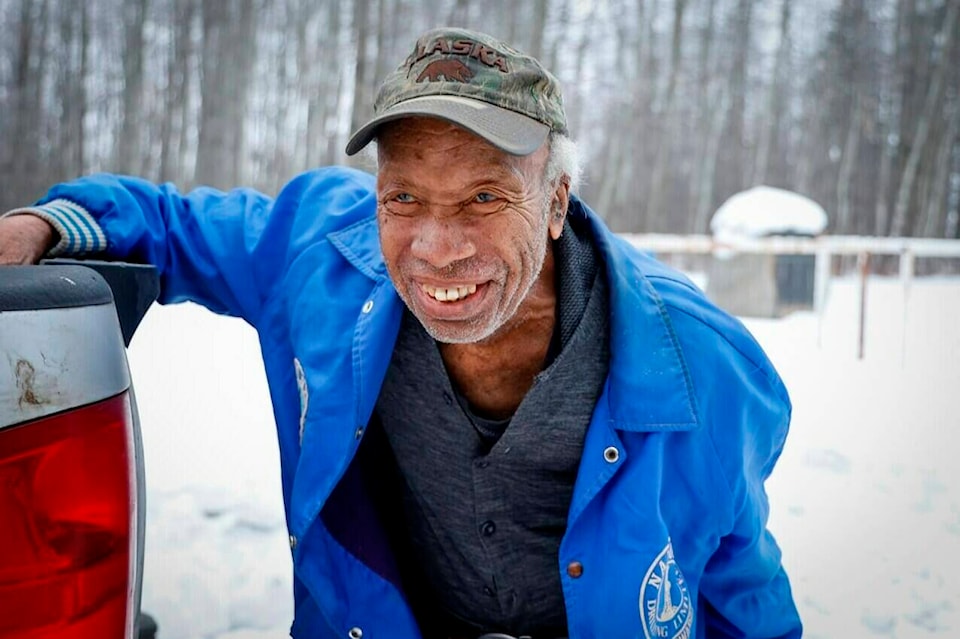Bดฮิชนูอ๘อ๘ึทMy name is Vant Hayes and IBดฮิชนูอ๘อ๘ึทm the only Black one left out here.Bดฮิชนูอ๘อ๘ึท
Hayes, who says heBดฮิชนูอ๘อ๘ึทs 88 years old or Bดฮิชนูอ๘อ๘ึทsomewhere around there,Bดฮิชนูอ๘อ๘ึท represents the end of an era in the village of Breton, 110 kilometres southwest of Edmonton.
His grandparents William and Mollie Hayes and their children moved to the area from Oklahoma in the early 1900s as part of the Great Migration of Black settlers from the United States, lured by the promise of free land and a better life.
An increase in discrimination in the southern U.S. in the early 1900s led to an exodus of African Americans to four tiny communities in Alberta. Breton, originally known as Keystone, was one.
Most of the descendants of the original 54 families have moved on, but Hayes remains.
Bดฮิชนูอ๘อ๘ึทYou would get a quarter (section), but you had to clear 10 acres on it before you could get the title. I guess that was one reason they migrated here. Another one was in the States. It was bad down there,Bดฮิชนูอ๘อ๘ึท he said.
The migration hit its peak between 1909 to 1911. A federal order-in-council in 1911 barred Black people from Canada because they were Bดฮิชนูอ๘อ๘ึทdeemed unsuitable to the climate and requirementsBดฮิชนูอ๘อ๘ึท of the country, but it was repealed later that year.
HayesBดฮิชนูอ๘อ๘ึท parents, Floyd and Elizabeth, moved their 10 children briefly to Kelowna, B.C., to find work, but returned to the homestead after the father died.
Bดฮิชนูอ๘อ๘ึทIt was tough. You try and look after 10 kids. You gotta figure out how youBดฮิชนูอ๘อ๘ึทre going to feed them today and the next day and we made it through,Bดฮิชนูอ๘อ๘ึท Hayes said.
Bดฮิชนูอ๘อ๘ึทWe ate a lot of eggs Bดฮิชนูอ๘อ๘ึทฆ a lot of chicken too,Bดฮิชนูอ๘อ๘ึท he added with a laugh.
But Hayes said despite the new surroundings, his mother never got over the treatment she received in Oklahoma.
Bดฮิชนูอ๘อ๘ึทA lot of people had moved up from the States and they figured this was the same as the States. My mother always carried a .43 Mauser rifle in the wagon with her. It was just for protection,Bดฮิชนูอ๘อ๘ึท said Hayes.
Bดฮิชนูอ๘อ๘ึทOne guy came riding up on this big horse and he started yelling at her and calling her names. She came back with this big .43 Mauser and said: Bดฮิชนูอ๘อ๘ึทIf you donBดฮิชนูอ๘อ๘ึทt get out of my yard right now, IBดฮิชนูอ๘อ๘ึทm going to shoot the horse and when youBดฮิชนูอ๘อ๘ึทre running IBดฮิชนูอ๘อ๘ึทm going to shoot you, too.Bดฮิชนูอ๘อ๘ึท
Bดฮิชนูอ๘อ๘ึทAfter that, he was real nice,Bดฮิชนูอ๘อ๘ึท he added with a chuckle.
Hayes spent years working on oil rigs but always came back to the farm. He hopes one of his granddaughters will carry on the family legacy.
HeBดฮิชนูอ๘อ๘ึทs worried about the local history disappearing when he dies.
Bดฮิชนูอ๘อ๘ึทYouBดฮิชนูอ๘อ๘ึทre not going to have this Black history,Bดฮิชนูอ๘อ๘ึท he said. Bดฮิชนูอ๘อ๘ึทItBดฮิชนูอ๘อ๘ึทs not going to go on forever.Bดฮิชนูอ๘อ๘ึท
Brandy FredricksonBดฮิชนูอ๘อ๘ึทs great, great grandparents Sam and Neoma Hooks moved with their four children from Sharpes, Okla., in 1911.
She said remembering the areaBดฮิชนูอ๘อ๘ึทs past is important because Bดฮิชนูอ๘อ๘ึทyou lose those shreds of historyBดฮิชนูอ๘อ๘ึท as older people pass away.
Bดฮิชนูอ๘อ๘ึทI know weBดฮิชนูอ๘อ๘ึทre fifth and my kids are sixth generation,Bดฮิชนูอ๘อ๘ึท she said, wiping away tears. Bดฮิชนูอ๘อ๘ึทTo me, itBดฮิชนูอ๘อ๘ึทs to know where they came from.Bดฮิชนูอ๘อ๘ึท
Allan Goddard, the curator of the Breton and District Historical Museum, grew up nearby but wasnBดฮิชนูอ๘อ๘ึทt aware of the areaBดฮิชนูอ๘อ๘ึทs Black history.
He said some early homestead records had Black landownersBดฮิชนูอ๘อ๘ึท race specified as their nationality in the corner of the page, which was not the case for white ones.
Bดฮิชนูอ๘อ๘ึทThey were Americans. That was quite eye-opening to me,Bดฮิชนูอ๘อ๘ึท said Goddard. Bดฮิชนูอ๘อ๘ึทWere they being identified to send them to a certain area or were they being identified just based on colour?Bดฮิชนูอ๘อ๘ึท
The community has Black History Month gatherings each year. The original cemetery was mostly forgotten but now a giant rock with a brass plaque pays tribute to the 27 people identified as being buried there.
Three tombstones were visible under a deep blanket of snow on a cold and foggy January day.
Bดฮิชนูอ๘อ๘ึทOur apologies for those we have missedBดฮิชนูอ๘อ๘ึท, reads the plaque.
Goddard said when the snow is gone, a few indentations where people may be buried are visible.
Bดฮิชนูอ๘อ๘ึทI was asked quite a few years ago, about the residential schools and this ground penetrating radar stuff,Bดฮิชนูอ๘อ๘ึท Goddard said, referring to searches for possible unmarked graves being undertaken at many former residential school sites across Canada.
Bดฮิชนูอ๘อ๘ึทThat was probably pretty high-tech at that time and I said, Bดฮิชนูอ๘อ๘ึทwell theyBดฮิชนูอ๘อ๘ึทre there, theyBดฮิชนูอ๘อ๘ึทre at peace,Bดฮิชนูอ๘อ๘ึท he said.
Bดฮิชนูอ๘อ๘ึทMaybe we leave it at that.Bดฮิชนูอ๘อ๘ึท
Bดฮิชนูอ๘อ๘ึทBill Graveland, The Canadian Press



